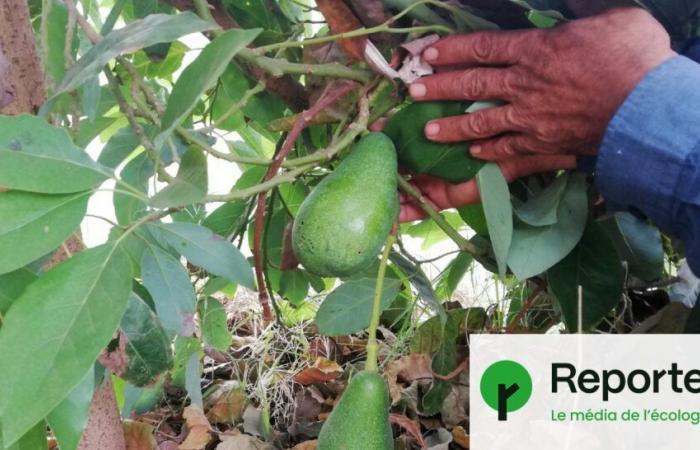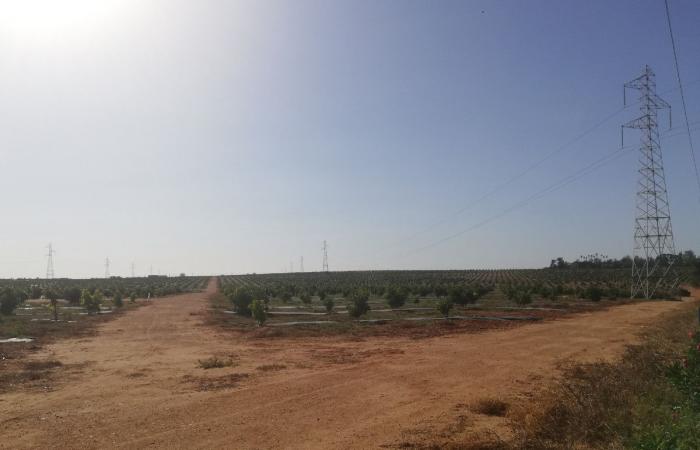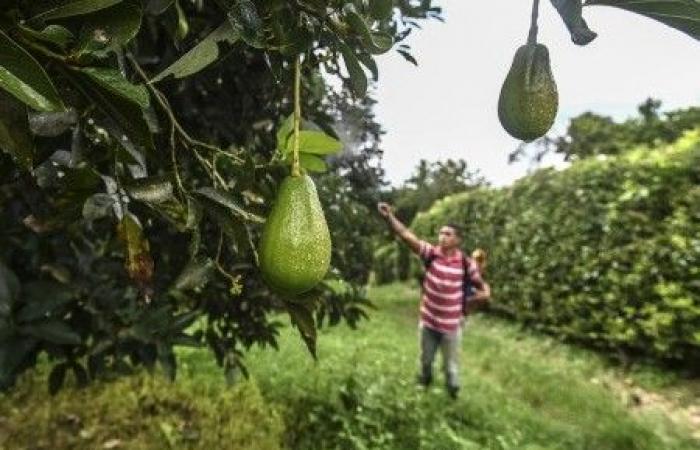Gharb region (Morocco), report
« The performance is impeccable »says Hicham, smiling, under his stifling greenhouse. Along National Highway 1, the section linking Sidi Taibi to Kénitra (around thirty kilometers from Rabat, Morocco) is overflowing with nurseries. Among the plants sold: avocados, highlighted on the panels which adorn the aisle. In around ten years, fruit cultivation has exploded in the country. The surface area concerned has more than doubled in five years. But introducing into Morocco a fruit originating from a tropical country, where rainfall is low, is surprising. And worries researchers and citizens. With an allocation of nearly 600 m3 of water per capita per year, the country is already in a situation of structural water stress.
There is urgency in this country, which is now part of the world’s top 10 exporters. Morocco would have produced 98,000 tonnes in 2022 and exported 56,000, particularly to Europe, according to the Food and Agriculture Organization of the United Nations (FAO). The Moroccan Avocado Association (Mava) speaks of 70,000 tonnes produced, of which 85 % exported. The country would have exported more than 163 million euros in 2023, according to the Foreign Exchange Office. Most of the land (95 % according to Mava) is located in the Gharb, along the Atlantic. The avocado trees stretch as far as the eye can see. Most are visible from the road, others are surrounded by huge concrete walls and barbed wire.
The subject, omnipresent, is sensitive. This is evidenced, among other things, by our difficulty in visiting plantations. Abdelaziz Rhezali, agronomist consultant specializing in avocado, still agreed to show us the field of one of his clients in the commune of Sidi Allal El Bahraoui, 30 km east of Rabat. Here, a large water tower sits not far from an immense uninhabited red villa. The farm, on which two people work all year round, is equipped with surveillance cameras. Each avocado plant is watered by three drip irrigation systems and water misters. The 1 hectare plot has three wells, each 27 meters deep.
A huge avocado farm just outside Tiflet.
© Pauline Chambost / Reporterre
There is no serious data either on the water requirements necessary to grow avocado in Morocco or on the actual consumption of the sector. A lack, even a certain opacity, which allows its defenders to put forward unverifiable and sometimes far-fetched figures. Abdellah El Yamlahi, president of Mava, speaks of 800 liters per kilo, with 10 tonnes collected per hectare, or 8 million liters per hectare ; Abdelaziz Rhezali of 260 liters per kilo with 25 tonnes per hectare, or 6.5 million liters per hectare.
Needs significantly lower than those known in Mexico, the world’s leading producer, for example. « It’s not comparable »replies out of hand the consultant, who refuses to tell us the pressure of the water drawn from the three wells on the plot and does not give us the sources of the advanced data.
« The rain always comes back »
Mohamed Taher Sraïri, professor at the Hassan Agronomic and Veterinary Institute II (IAV) of Rabat, qualifies the controversy of the figures. « There is still a scientific consensus according to which approximately 16 million liters per hectare are needed.he summarizes. It’s colossal. » Or the equivalent of the annual domestic consumption in France of 300 inhabitants.
In the Gharb region, rainfall is between 300 and 500 mm per year. The majority of water used therefore comes from irrigation. « We fulfill all the needs ourselves »even recognizes Abdelaziz Rhezali when we ask him about the contribution of rain.
Beyond the battle of numbers, Abdellah El Yamlahi wants to put things into perspective: « There are new irrigated lands, of course, but the vast majority have just switched from one crop to another and consume less water than before. »he assures, without providing figures. And then: « Morocco experienced droughts before the avocado and will experience others. The rain always comes again, Hamdoullah. It will pass. I’m not worried. And in the worst case scenario, we are already thinking about plan B by building desalination plants. »
Drip, counterproductive ?
And the president of Mava insists: this fruit still represents only a tiny part of the crops – 10,000 hectares out of the 8 million hectares of agricultural land… not necessarily irrigated. « Reasoning on a national scale makes no sense, they are not the same basins. We must look region by region and the balance between water supply and demand in this area. »points out Najib Akesbi, economist specializing in agriculture.
The defenders of« or vert » highlight drip irrigation and its water efficiency. Morocco has also relied heavily on this technology and subsidized it for avocados until recently. He stopped subsidies for watermelons grown in the desert at the same time, precisely when public opinion began to express itself on the subject. This system has its limits and a rebound effect. Several studies, including in Morocco, show that it ultimately leads to irrigating new land and therefore consuming more.
The inhabitants of Tiflet have “ suffered water cuts for the second summer in a row “. Here, in September 2024.
© Pauline Chambost / Reporterre
Not all farmers use drip irrigation for avocados, several people we spoke to tell us. « In the summer, my neighbors turn on the mister continuously »even reports a small owner who has a few avocado trees in the Gharb. The water used for watering is taken directly from the water tables, which sometimes have difficulty renewing themselves.
According to data published by the Sebou hydraulic basin agency, the Gharb aquifer system is in deficit ; most of the withdrawals are due to agricultural activity.
« It’s water export »
« The development of avocado cultivation in Morocco only caricatures a policy pursued for decades: an agro-export model »remarks Najib Akesbi. As the inputs come from abroad, the water is pumped in Morocco, then the fruits leave the country, for him, it is no less than a « water export ».
The imbalance between water supply and need is growing. For the researcher, of course, this is explained by climate change and drought, but « political choices accentuate it despite common sense ».
Mohamed Taher Sraïri observes that avocado culture embraces an idea that Morocco has already been following for several decades: increasing the economic productivity of water. In other words, we seek to generate a maximum of dirhams per m3 of water used. But for him, « twenty years later, this conception collapsed because we underestimated the origin of water ». Et « by dint of drawing, we can undermine the water security of neighboring villages »he warns.
« The residents no longer had water »
An observation shared by the inhabitants of Tiflet, 60 km from Rabat. « We suffered water cuts for the second summer in a row. Unless they were on the ground floor, for several weeks, residents had no water for twelve hours a daysays Anace Hedden, co-founder of the Tiflet Young Leaders Network association, who demonstrated in the city on July 29. Fortunately, those who have wells have made them available to other residents. »
In the surroundings of his town (approximately 90,000 inhabitants), the fields of cereals and grapes have been replaced by those of avocados in recent years.
« The government either has direct interests or is a prisoner of lobbies »
The thirty-year-old makes a link between the two: « Most people only see drought as the cause of the cuts, but we have the right to ask questions ! » He says that the municipality gives no explanation for the absence of water in the tap — when contacted, they did not respond. In recent years, Moroccans have seen the direct consequences of water stress on their daily lives. At certain times of the year, cities like Casablanca, Rabat or Khemisset cut off water at night, reduce its flow, prohibit the use of domestic water for watering gardens or washing cars or even require the closure of hammams three days a week.
As for the Gharb area, it is so close to the coast that there is a risk of salt infiltration into the water table. Hicham, the nurseryman from Kenitra, reports that an avocado plantation very close to the ocean should have already stopped its activity because of too salty water – information that Reporterre could not verify. Infiltrations are already taking place in another very agricultural region further south, in Agadir. The fear that the nightmare will repeat itself is on the lips of all the researchers interviewed.
So why continue down this path? ? « It’s a question of interests »simply answers Najib Akesbi. The financial profitability of this culture is certain. « The government either has direct interests or is a prisoner of lobbies. We clearly have a government of employers, hostage to the merchant »describes the researcher, without revealing any secrets. The head of government, Aziz Akhannouch, is one of the richest businessmen in the country. As for the King of Morocco Mohammed VIthe specialist media Africa Intelligence revealed that it had itself invested in the lawyer sector.
legend








